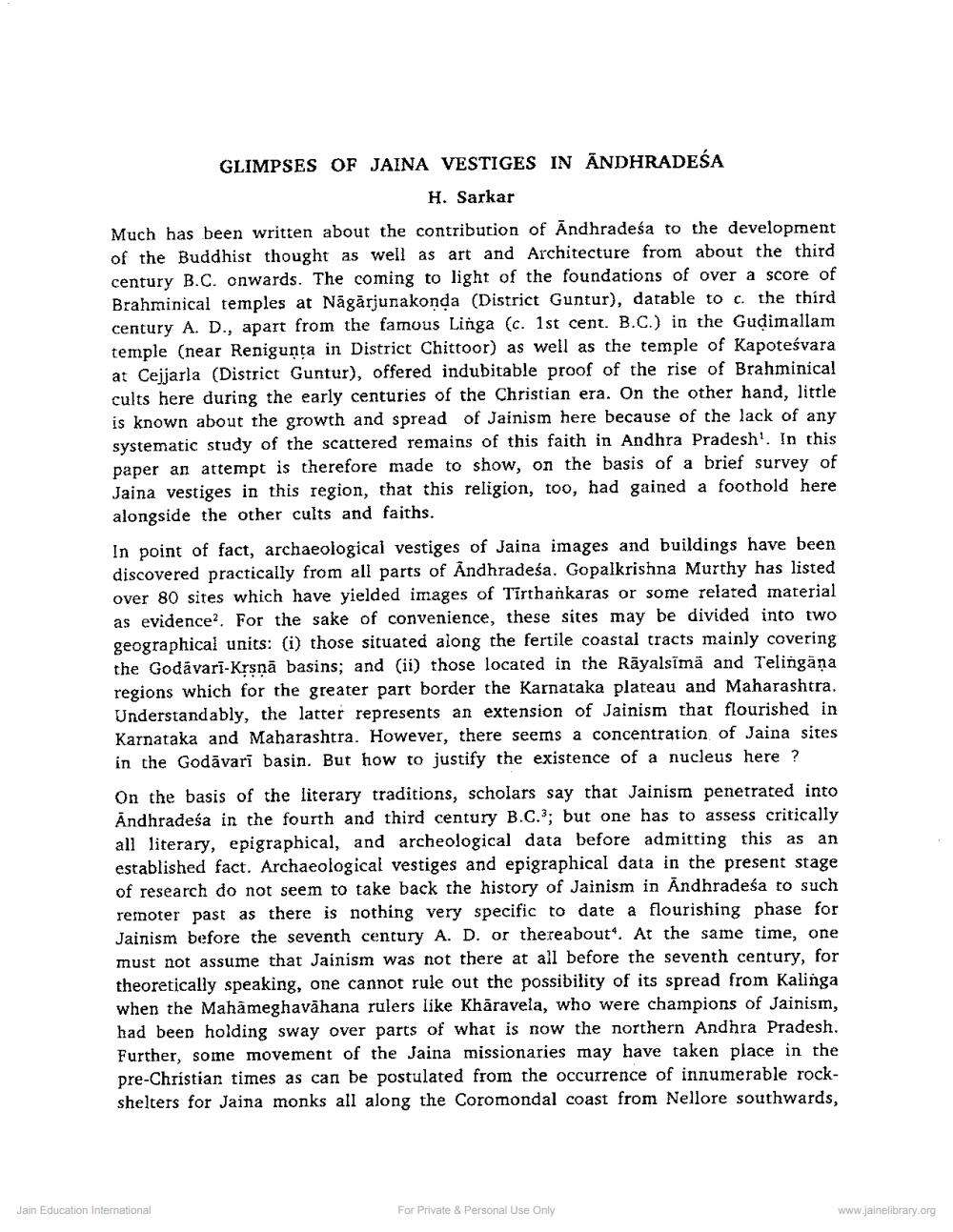Book Title: Glimpses of Jaina Vestiges in Andhradesa Author(s): H Sarkar Publisher: Z_Nirgrantha_1_022701.pdf and Nirgrantha_2_022702.pdf and Nirgrantha_3_022703.pdf View full book textPage 1
________________ GLIMPSES OF JAINA VESTIGES IN ANDHRADESA H. Sarkar Much has been written about the contribution of Andhradeśa to the development of the Buddhist thought as well as art and Architecture from about the third century B.C. onwards. The coming to light of the foundations of over a score of Brahminical temples at Nagarjunakonda (District Guntur), datable to c century A. D., apart from the famous Linga (c. 1st cent. B.C.) in the Gudimallam temple (near Renigunta in District Chittoor) as well as the temple of Kapotesvara at Cejjarla (District Guntur), offered indubitable proof of the rise of Brahminical cults here during the early centuries of the Christian era. On the other hand, little is known about the growth and spread of Jainism here because of the lack of any systematic study of the scattered remains of this faith in Andhra Pradesh'. In this paper an attempt is therefore made to show, on the basis of a brief survey of Jaina vestiges in this region, that this religion, too, had gained a foothold here alongside the other cults and faiths. In point of fact, archaeological vestiges of Jaina images and buildings have been. discovered practically from all parts of Andhradeśa. Gopalkrishna Murthy has listed over 80 sites which have yielded images of Tirthankaras or some related material as evidence. For the sake of convenience, these sites may be divided into two geographical units: (i) those situated along the fertile coastal tracts mainly covering the Godavari-Krsna basins; and (ii) those located in the Rayalsimä and Telingana regions which for the greater part border the Karnataka plateau and Maharashtra. Understandably, the latter represents an extension of Jainism that flourished in Karnataka and Maharashtra. However, there seems a concentration of Jaina sites in the Godavari basin. But how to justify the existence of a nucleus here? On the basis of the literary traditions, scholars say that Jainism penetrated into Andhradeśa in the fourth and third century B.C.3; but one has to assess critically all literary, epigraphical, and archeological data before admitting this as an established fact. Archaeological vestiges and epigraphical data in the present stage of research do not seem to take back the history of Jainism in Andhradeśa to such remoter past as there is nothing very specific to date a flourishing phase for Jainism before the seventh century A. D. or thereabout. At the same time, one must not assume that Jainism was not there at all before the seventh century, for theoretically speaking, one cannot rule out the possibility of its spread from Kalinga when the Mahämeghavahana rulers like Khåravela, who were champions of Jainism, had been holding sway over parts of what is now the northern Andhra Pradesh. Further, some movement of the Jaina missionaries may have taken place in the pre-Christian times as can be postulated from the occurrence of innumerable rockshelters for Jaina monks all along the Coromondal coast from Nellore southwards, Jain Education International For Private & Personal Use Only www.jainelibrary.orgPage Navigation
1 2 3 4 5 6 7 8
